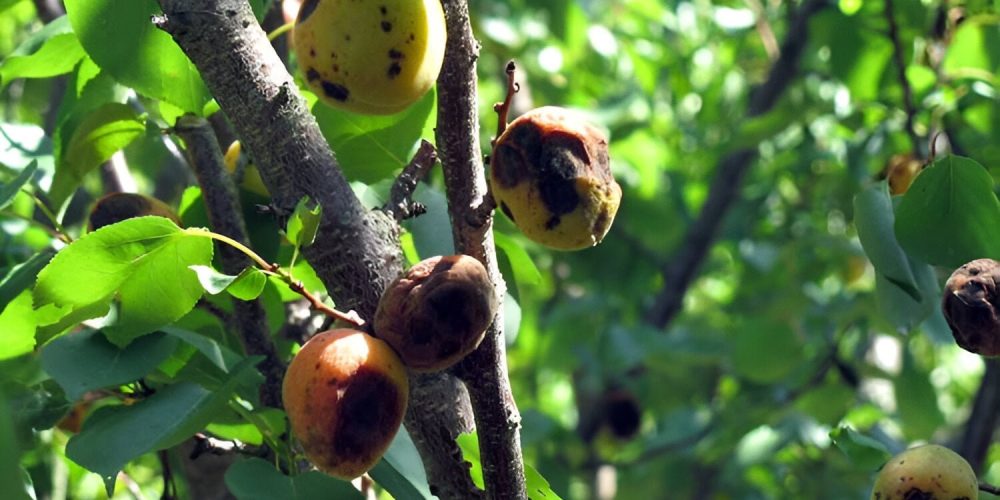Table of contents of the article
ToggleThe apricot fruit beetle causes significant damage to fruits, leading to yield losses. This article from the “WORLD OF PLANTS” website explains how to identify this beetle and ways to combat it.
Symptoms of apricot fruit beetle
- Scientific name : Rhynchites auratus Scop
- the family : coleoptera
- The presence of perforated buds.
- Infected fruits secrete glue from the entry hole.
- Fruit falling.
- When the fruit is opened, a hole and legless, arched larvae are seen.
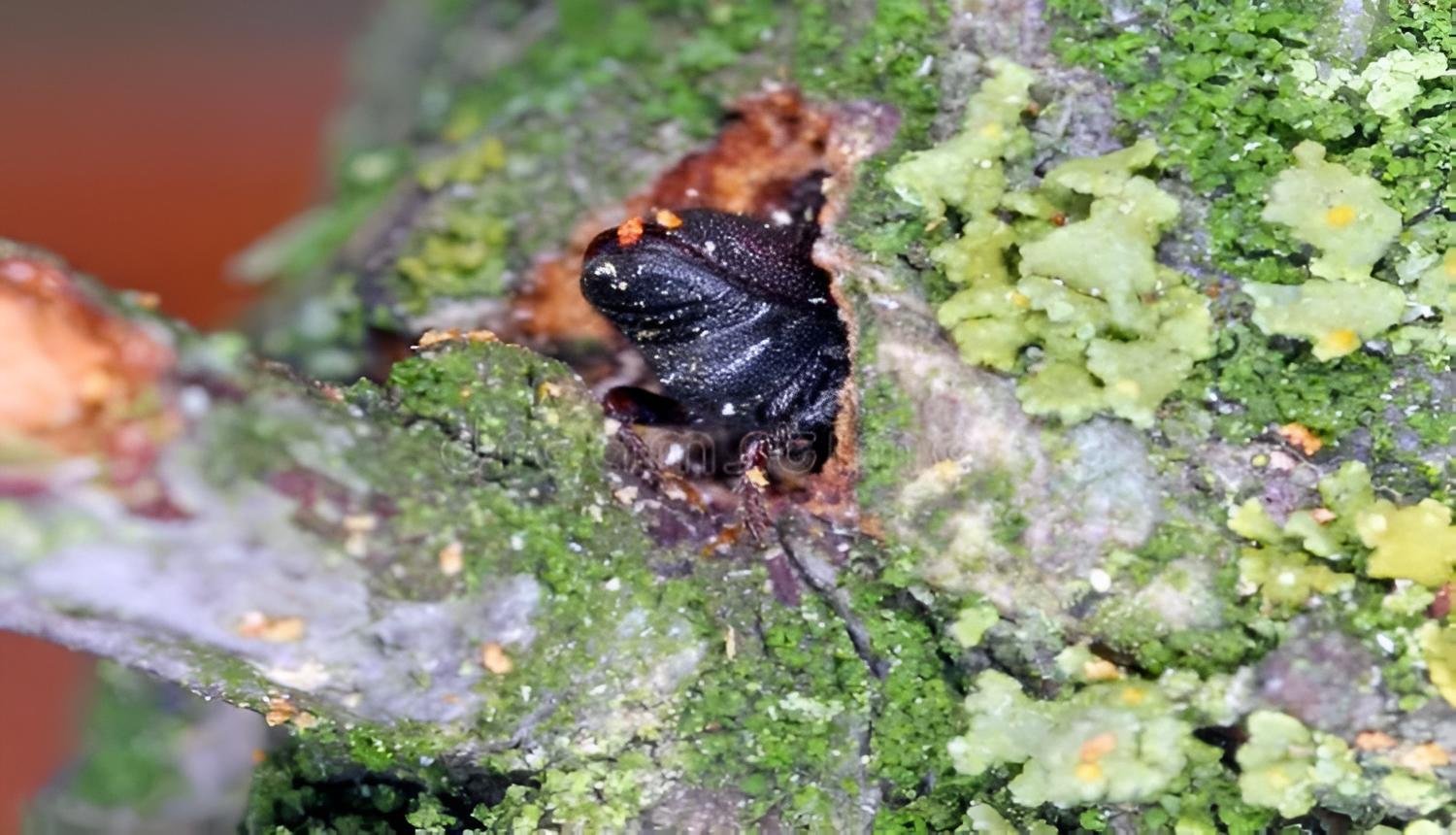
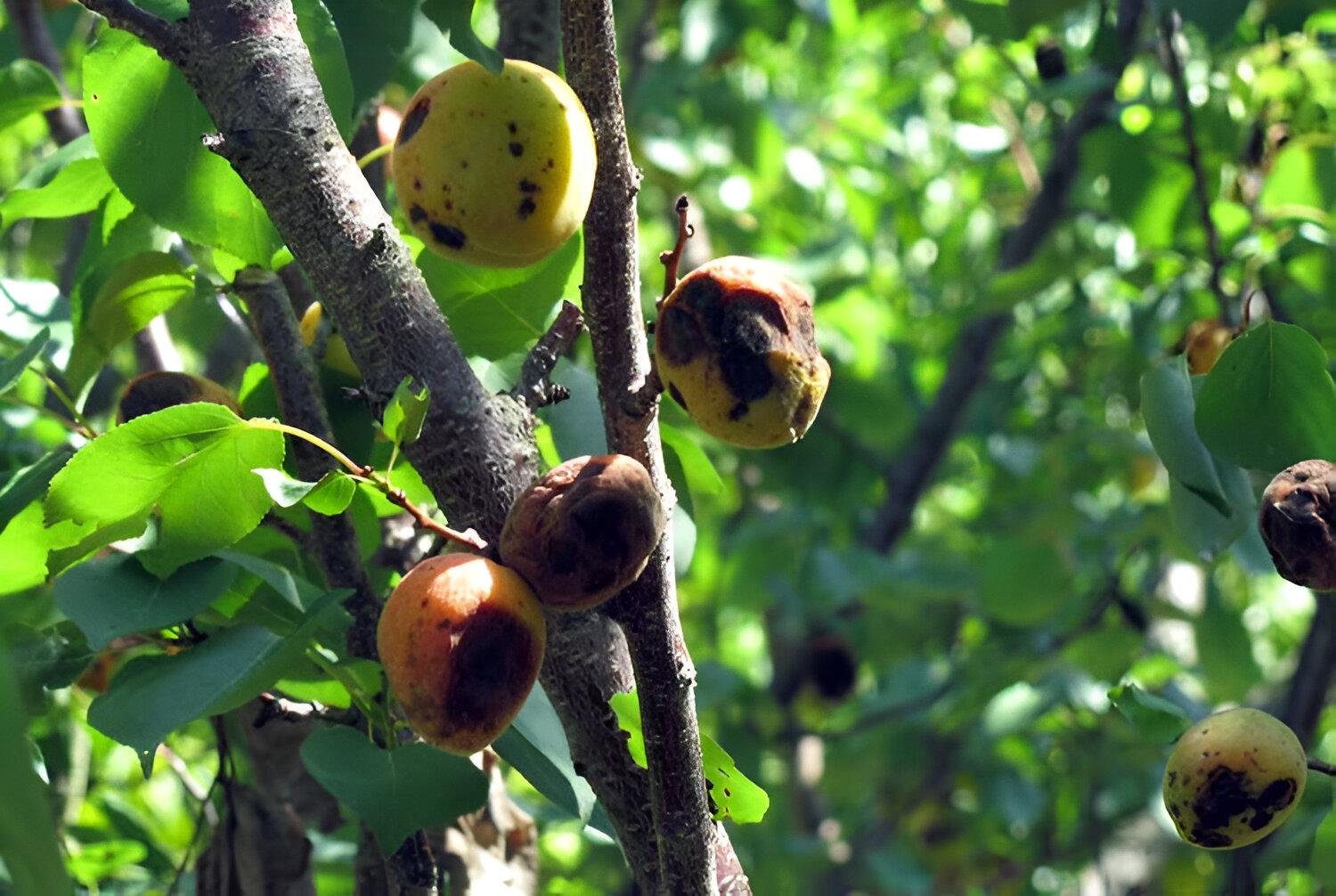
Description of the apricot fruit beetle
Adult weevils are metallic green or shiny red in colour, with sparse bristles, the average length of adult females being 10.4, 12 and 10.7 and the average length of males being 10, 10.6 and 10.1 mm respectively. There are many ridges on the insect’s chest and sheaths. The head is in the form of a proboscis, carrying at its end mouthparts and antennae. The male has two lateral spines on the first thoracic ring.
The legless worm larvae are white in colour. The first instar larvae are 1-1.5 mm long and the last instar larvae are 7.3-11 mm long, with an average of 9.3 mm.
The pupa of the free type is bright yellow in color and is found in the soil within a clay coating or within the seeds of fallen fruits.
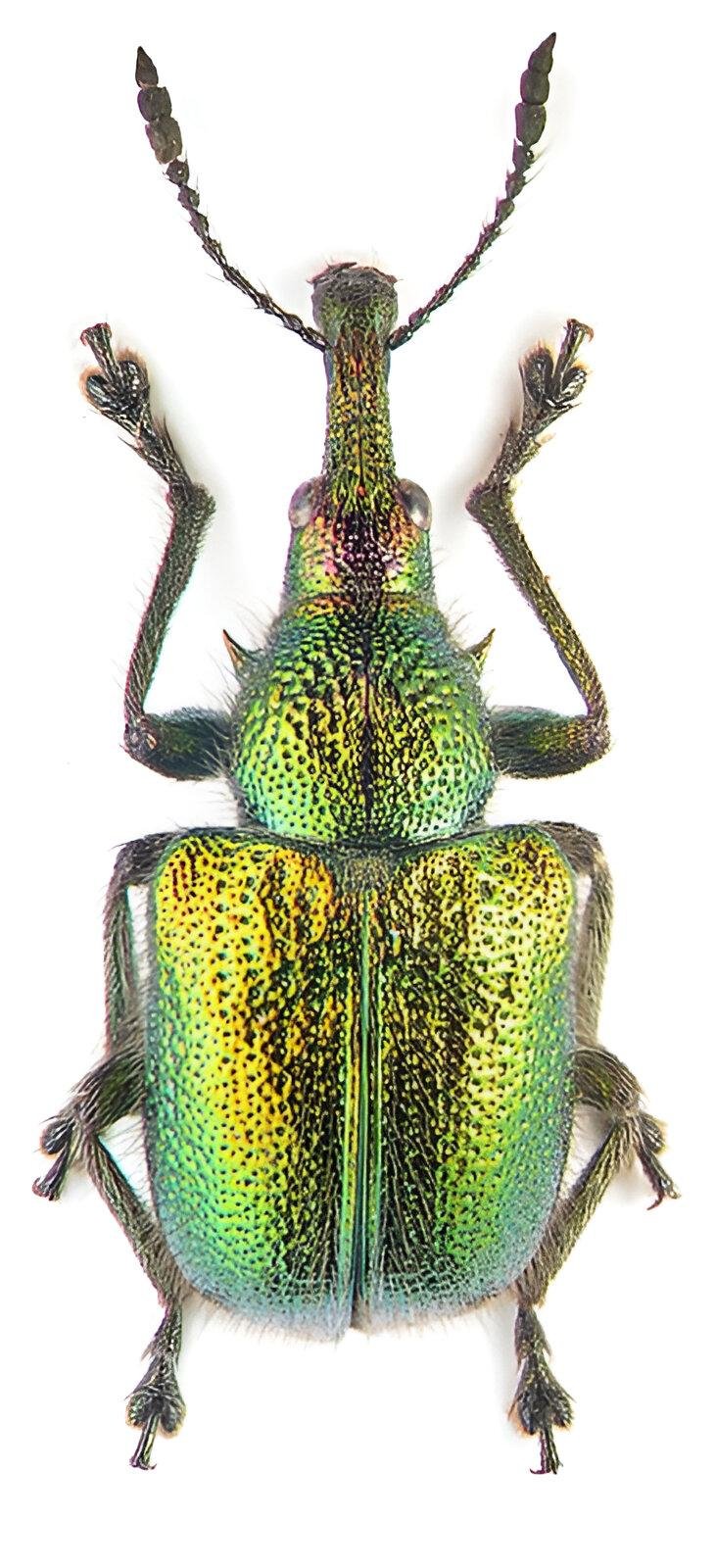
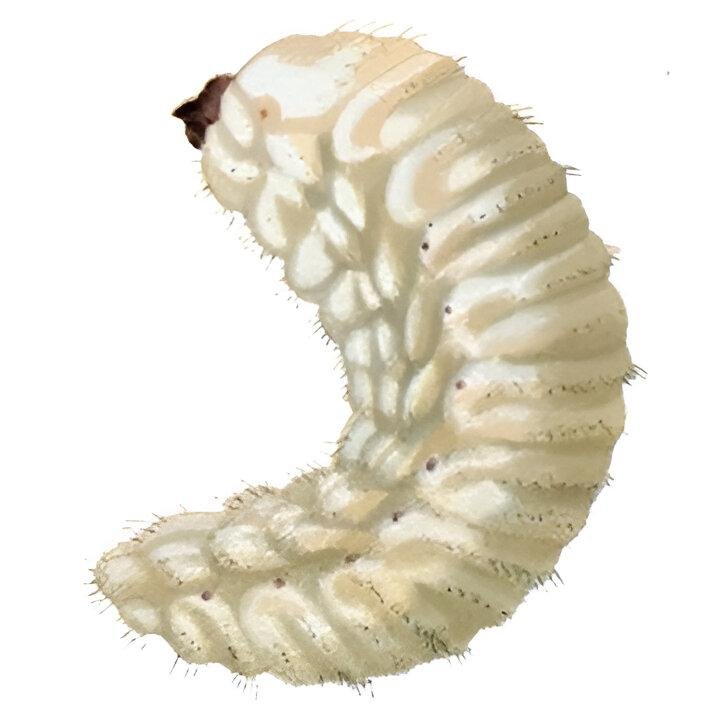
Causes of apricot fruit beetle
- The insect attacks apricot trees and prefers weak, poorly cared for trees that have been exposed to drought and prolonged thirst, especially on the hot days of summer.
- Not pruning.
- The farmer’s failure to properly irrigate the apricot trees encourages infection.
Conditions suitable for the spread of the disease
- Conditions (25±1°C, 40–50% relative humidity).
Apricot beetle development cycle
Adults appear in mid-April and their appearance coincides with the blooming of the tree.
- The adults mate several times after feeding on the fruit pulp and young leaves.
- The egg-laying period is 28-39 days, with an average of 32.3 days. The beginning of egg laying coincides with the completion of petal fall. Females lay only one egg on each fruit. The number of eggs reached 29-193 eggs per female, with an average of 99.3. The eggs hatch after 3-5 days, with an average of 4.2 days.
- The average pupal period is 25, 35 and 29.4 days respectively. The lifespan of both male and female adults ranged between 35-60 days
- The eggs hatch after about 10 days and the first instar larvae penetrate the fruit stones after 24 hours. The larval period lasts from 18 to 20 months, so each generation of this insect is completed within two years.
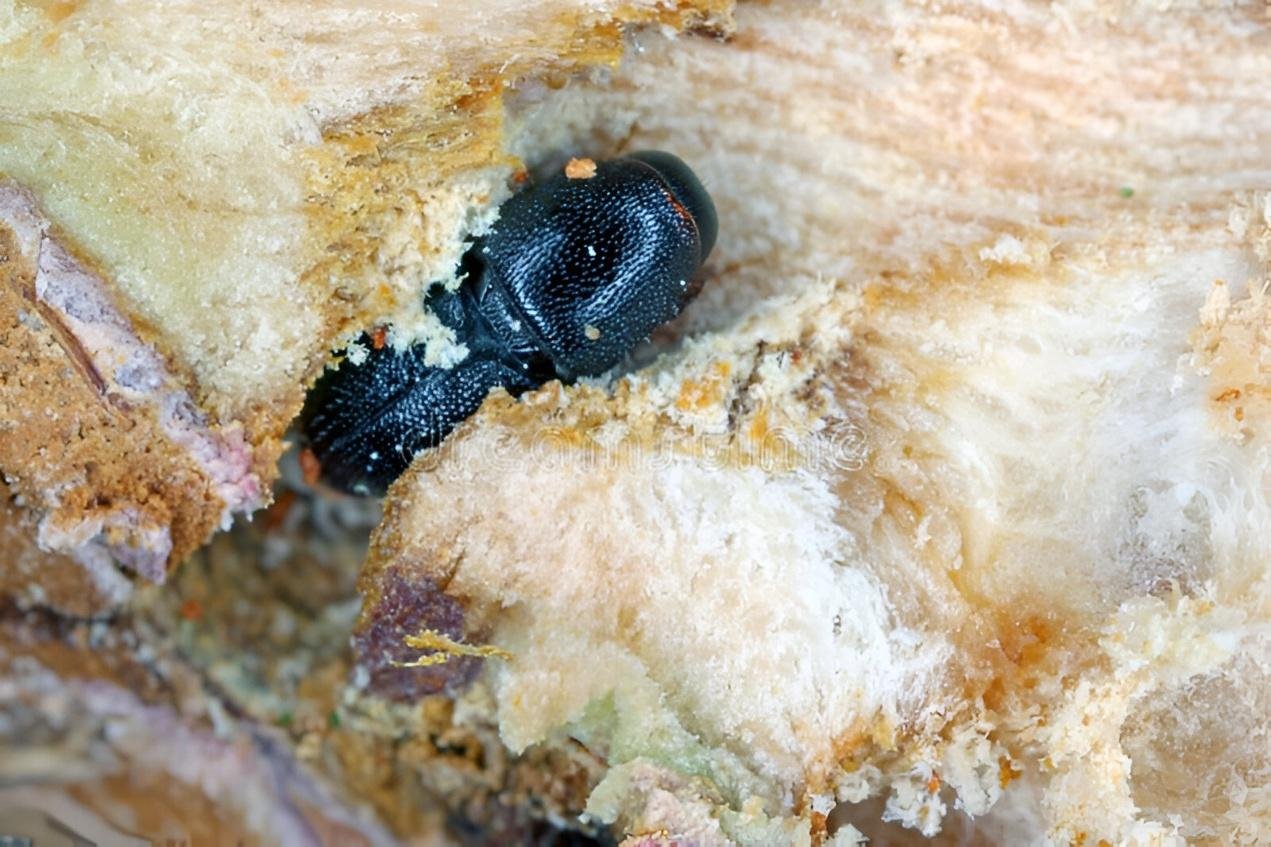
Losses from the spread of the apricot beetle
- It weakens the trees and attracts other borer pests to the apricot trees.
- This insect threatens the life of the entire apricot tree as a result of targeting the skeletal branches, not just its production
Apricot beetle control strategy
1. Preventive measures to prevent the occurrence of apricot fruit beetle
- Autumn tillage with winter irrigation.
- Monitor the trunks, branches and twigs of apricot trees systematically and regularly on a daily basis, and record any potential injuries from clear or unclear holes or holes.
- Cut and burn infected trees, and burn pruning waste completely
- Pay attention to organizing irrigation, fertilization and pruning.
2. Recommendations for chemical and organic control of the apricot fruit beetle
- Chemical control: Spraying 1000× thiodane emulsion can kill more than 90% of pests.
- Use Pyrethrum FS (pyrethrin + sesame oil + soft potassium soap) at 0.05% or 0.1%
- Organic control: Coating the branches of apricot trees with a lime substance in the summer to protect them from the scorching rays of the sun, especially when the temperature rises above 32 degrees Celsius.
In conclusion, we would like to note that we, at the world of plants website, offer you all the necessary services in the world of plants, we provide all farmers and those interested in plants with three main services::-
- Artificial intelligence consulting service to help you identify diseases that affect plants and how to deal with them.
- Blog about plants, plant diseases and care of various crops ... You are currently browsing one of her articles right now.
- An application that provides agricultural consultations to clients, as well as a service for imaging diseases and knowing their treatment for free – Click to download the Android version from Google Play Store، Click to download the IOS version from the Apple App Store.
References
- Hukui, Su, and Sun Yixiang. “Bionomics and control of Rhynchites auratus Scope.” Forest Pest and Disease 18.2 (1999): 18-19
- DEZIANIAN, Ahmad. Investigation on biology of cherry weevil Rhynchites auratus (SCOP) in Shahrood region. Applied Entomology and Phytopathology, 2005, 73.1: 105-117.
- Andreev, Radoslav, Hristina Kutinkova, and Konstantinos Baltas. “Non-chemical control of some important pests of sweet cherry.” Journal of Plant Protection Research (2008).
- Kolyaee, R., Dezyanian, A., Shokat, A. A., & Joyandeh, A. (2002). Investigation of control methods with cherry Weevil (Rhynchites auratus Scop
- Bionomics and control of Rhynchites auratus Scop. – europepmcInvestigation on biology of cherry weevil Rhynchites auratus (Scop) in Shahrood regionAGRIS – International System for Agricultural Science and Technology – fao




